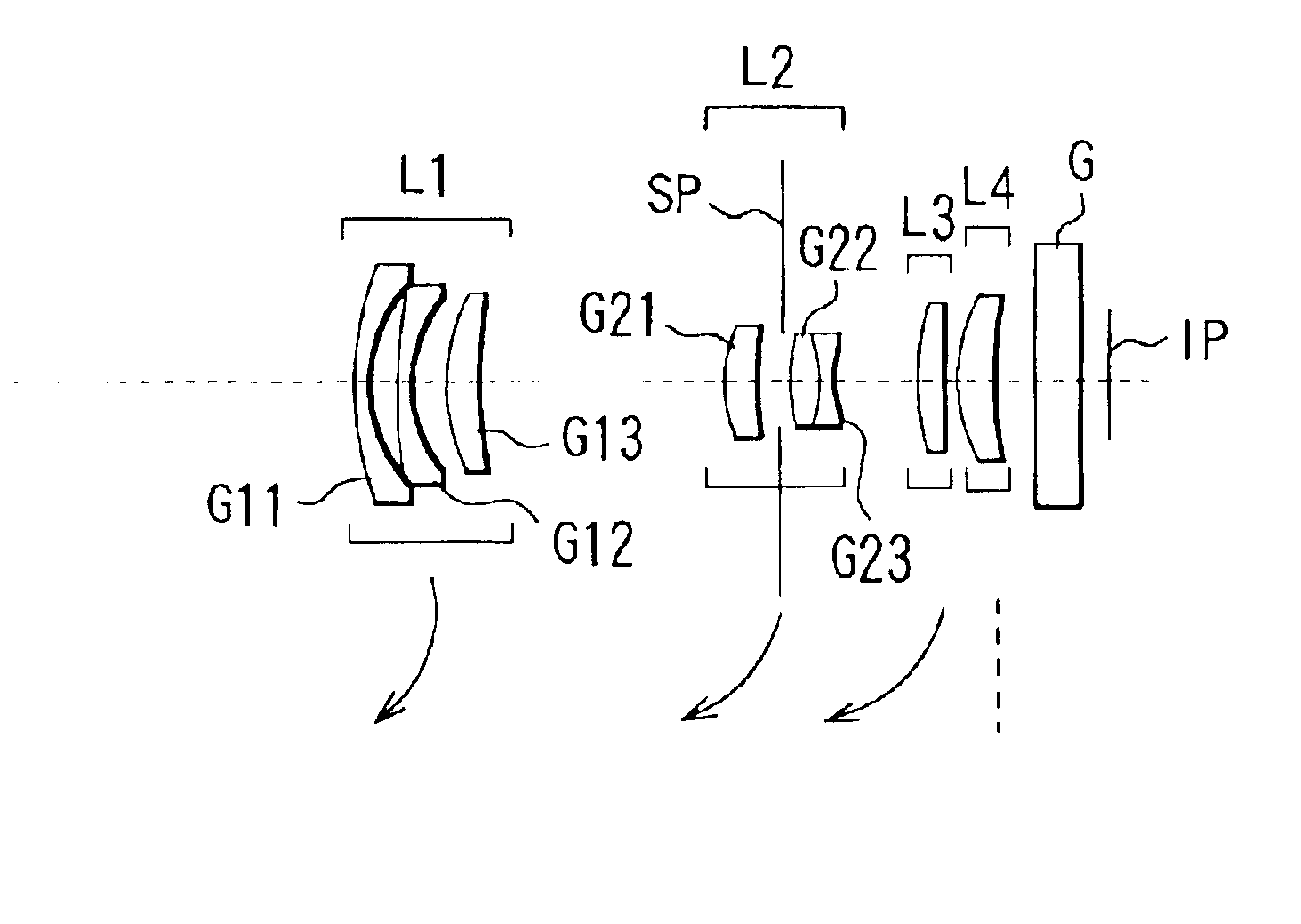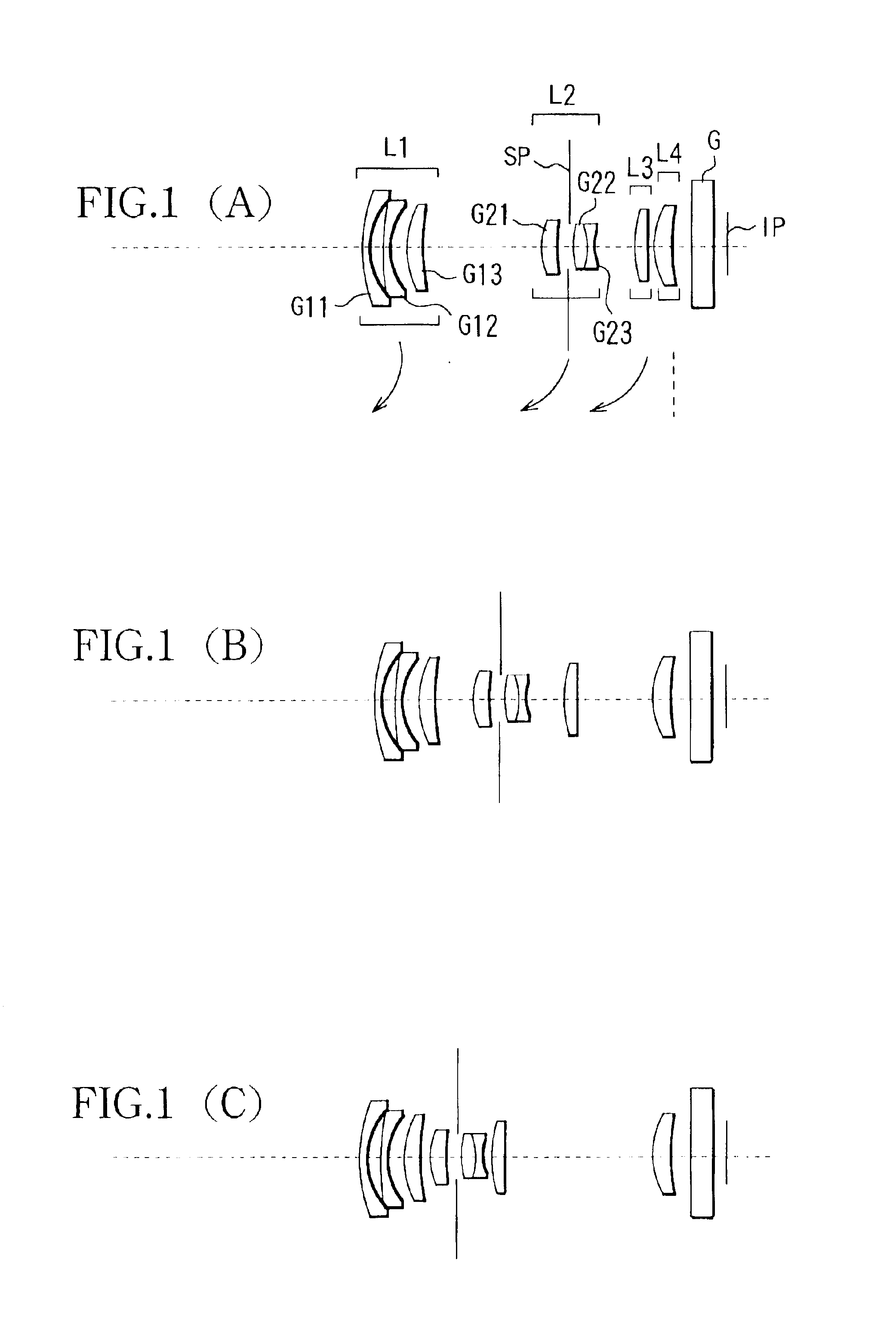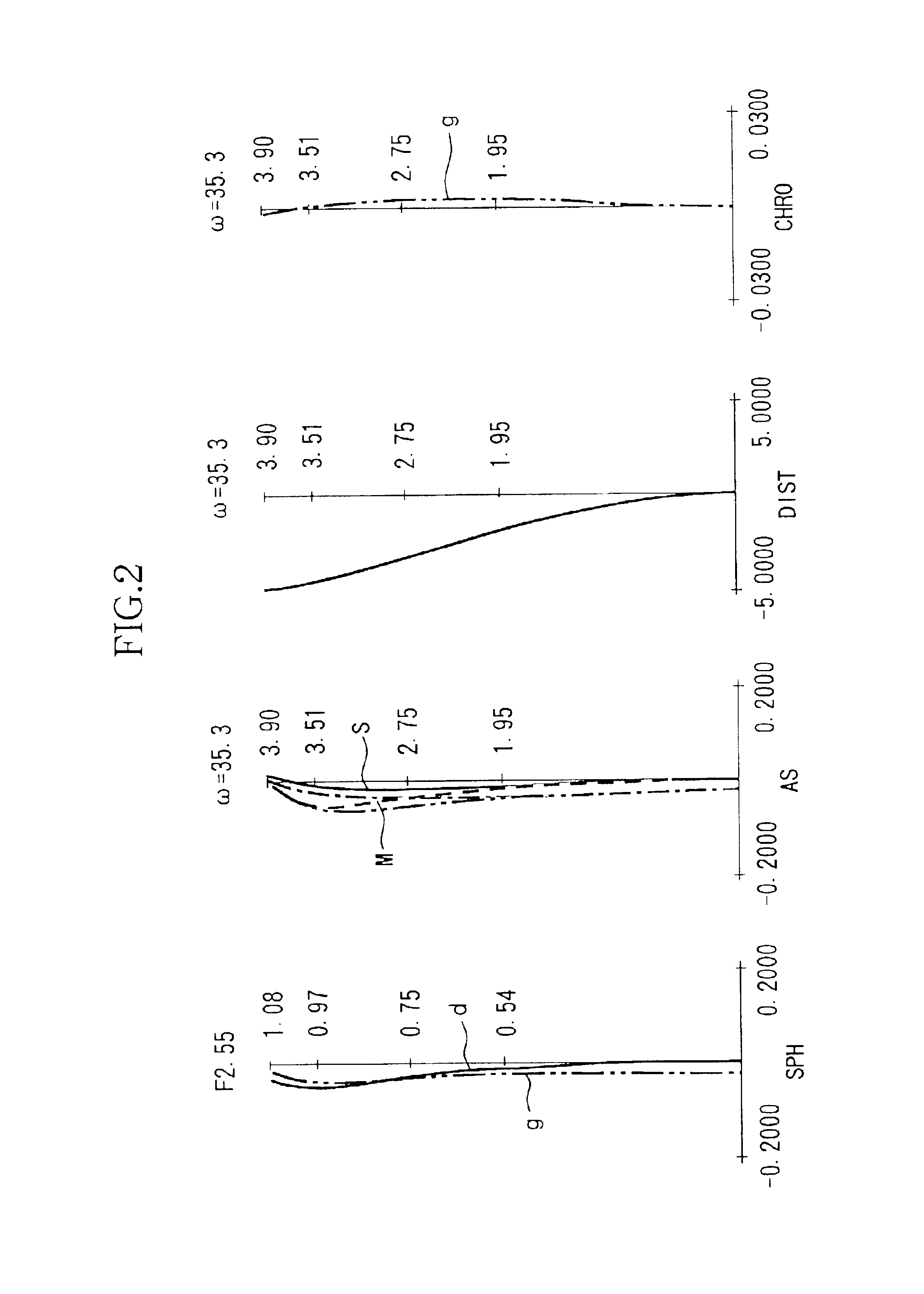Zoom lens and camera
a zoom lens and zoom range technology, applied in the field of zoom lenses, can solve the problems of limited power distribution from a design perspective to increase the size of the total lens system, difficulty in manufacturing, and difficulty in achieving high optical performance across the zoom range, and achieve the effect of fewer lenses and good optical performan
- Summary
- Abstract
- Description
- Claims
- Application Information
AI Technical Summary
Benefits of technology
Problems solved by technology
Method used
Image
Examples
embodiment 5
[0163]In Embodiment 5, the second lens subunit L12b consists of the positive lens having both convex lens surfaces.
[0164]In Embodiments 4 to 7, the first lens unit L11 moves along a nearly complete back and forth locus during zooming. Positions of the first lens unit L11 on the optical axis at the wide angle end and at the telephoto end are almost the same, and in the intermediate zoom area, the first lens unit L11 moves along a convex locus toward the image. In Embodiments 4 to 7, the first lens subunit L12a and the second lens subunit L12b move toward the object during zooming.
[0165]In Embodiments 4 and 5, the space between the first lens subunit L12a and the second lens subunit L12b decreases during zooming from the wide angle end to the telephoto end.
embodiment 6
[0166]In Embodiment 6, the space between the first lens subunit L12a and the second lens subunit L12b once decreases during zooming from the wide angle end to the telephoto end, and then increases. At this time, the air space is slightly smaller at the telephoto end than at the wide angle end.
embodiment 7
[0167]In Embodiment 7, the space between the first lens subunit L12a and the second lens subunit L12b does not change during zooming.
[0168]Now, numerical examples of Embodiments 4 to 7 will be shown. Numerical Examples 4, 5, 6, and 7 correspond to Embodiments 4, 5, 6, and 7. Reference characters in Numerical Examples 4, 5, 6, and 7 have the same meanings as those in Numerical Examples 1, 2, and 3, and the descriptions thereof will be omitted.
[0169]Relationships between the above described conditional expressions and the values in the numerical examples will be shown in Table 2.
[0170]
<Numerical Example 4>f = 6.75 − 17.62Fno = 2.88 − 4.902ω = 68.0 − 29.0R1 =88.033D1 =1.50N1 =1.802380ν1 =40.8*R2 =5.336D2 =2.15R3 =9.867D3 =2.14N2 =1.846659ν2 =23.8R4 =27.614D4 =VariableR5 =StopD5 =0.80R6 =7.073D6 =2.00N3 =1.696797ν3 =55.5R7 =−49.011D7 =0.20*R8 =13.188D8 =2.25N4 =1.743300ν4 =49.2R9 =−6.389D9 =0.70N5 =1.749497ν5 =35.3R10 =5.043D10 =VariableR11 =181.307D11 =0.60N6 =1.698947ν6 =30.1R12 ...
PUM
 Login to View More
Login to View More Abstract
Description
Claims
Application Information
 Login to View More
Login to View More - R&D
- Intellectual Property
- Life Sciences
- Materials
- Tech Scout
- Unparalleled Data Quality
- Higher Quality Content
- 60% Fewer Hallucinations
Browse by: Latest US Patents, China's latest patents, Technical Efficacy Thesaurus, Application Domain, Technology Topic, Popular Technical Reports.
© 2025 PatSnap. All rights reserved.Legal|Privacy policy|Modern Slavery Act Transparency Statement|Sitemap|About US| Contact US: help@patsnap.com



